Stitching Your First Mirabilia/Nora Corbett: Adding Seed Beads to Cross Stitch
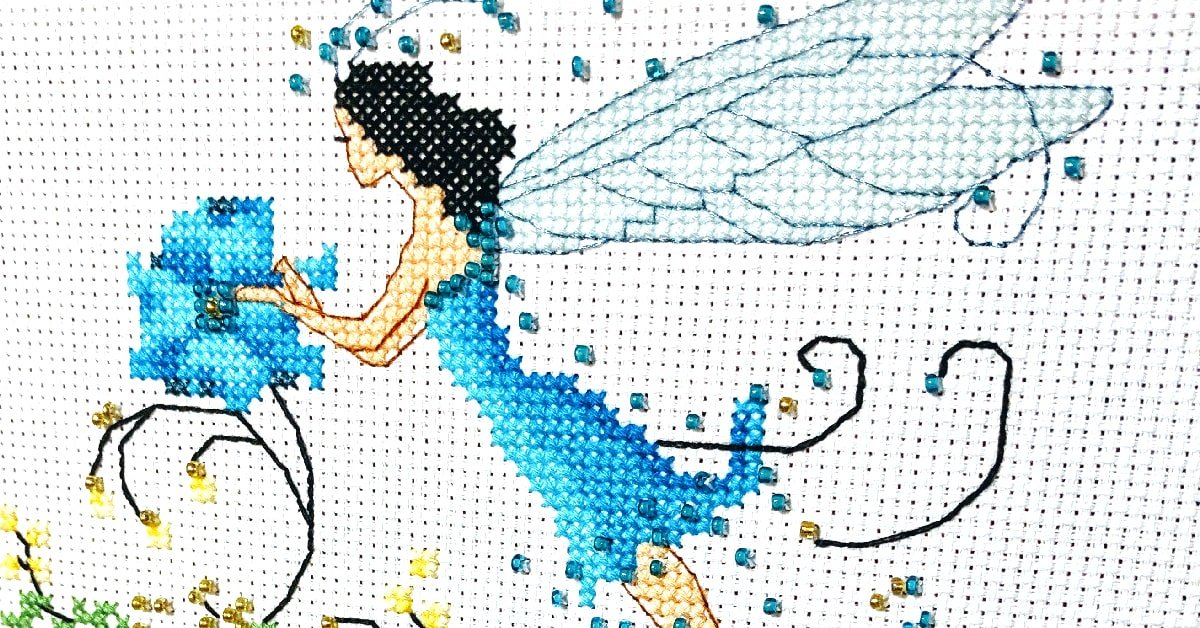
Beading is a stunning way to embellish your cross stitch projects. They add an elevated level of depth to your work.
However, you are going to need to know a few things if you are going to successfully cross stitch with beads. I had a hard time finding information when I was researching that was all in one place.
If this is your first time adding seed beads to a project like it was for me, the task could be a little daunting.
There are so many different options like what needles do you use and what’s the right way to stitch on the beads?
Ultimately, the decision is up to you. You are the one stitching so you have to be comfortable and happy with the way it’s being done.
It wasn’t until I tested these different techniques that I discovered what I was comfortable with.
WANT FREE CROSS STITCH PATTERNS?
Sign up for my newsletter to get access.

What Type of Needle is Used for Beading Mirabilias?
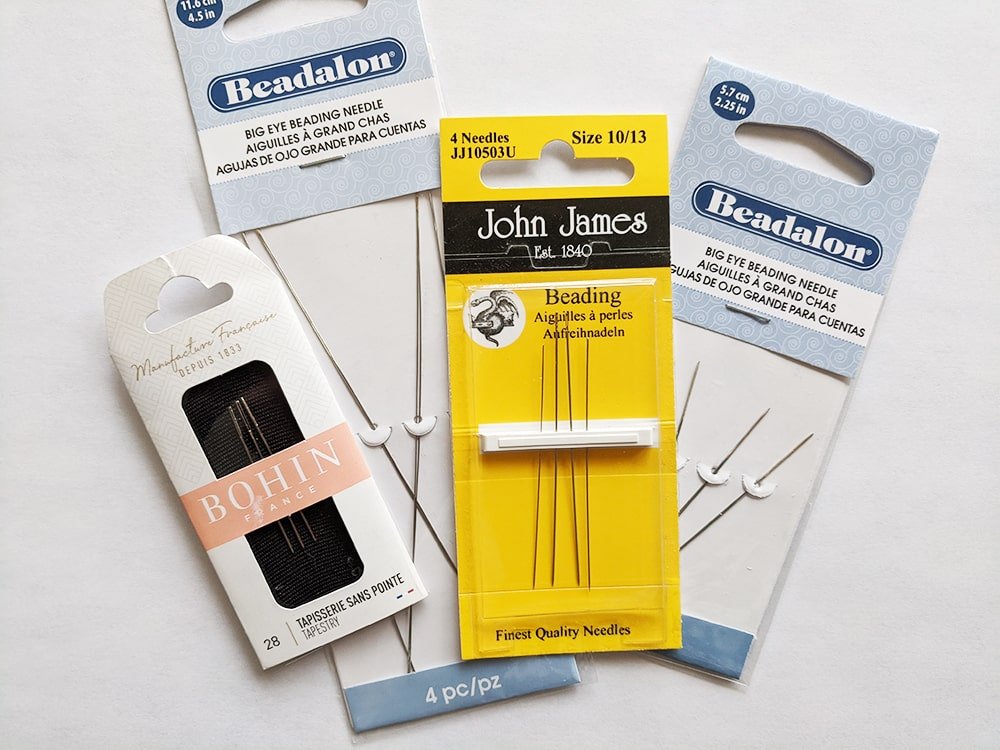
For seed beads that are 11/0 and bigger, a size 28 tapestry needle will work to secure the beads. There is no need to purchase beading needles.
The standard beads for Mirabilias and Nora Corbetts are the Mill Hill 11/0 seed beads. Double-check what your pattern calls for before going crazy buying supplies.
I usually stitch with a 28 tapestry needle on 32ct so beading with the same needle that I was stitching with was very natural for me.
For the Petite Seed Beads which are 15/0, you will need a #10 beading needle. The Big Eye Beading Needles by Beadalon are great to use with the smaller beads because they are easy to thread.
What Thread is Used for Beading Mirabilias?
Match DMC to the Bead
Considering the pattern uses beads that are similar colors to the stitching, chances are that you are using DMC that matches the beads.
Using DMC that is a similar color to your beads is a popular choice because it is easy to work with.
You are already using it to stitch with so why not use it to bead with?
Another benefit is that the thread is cotton. Although you do not want to directly apply heat to your beads, the thread won’t melt like nylon will.
Match DMC to the Fabric
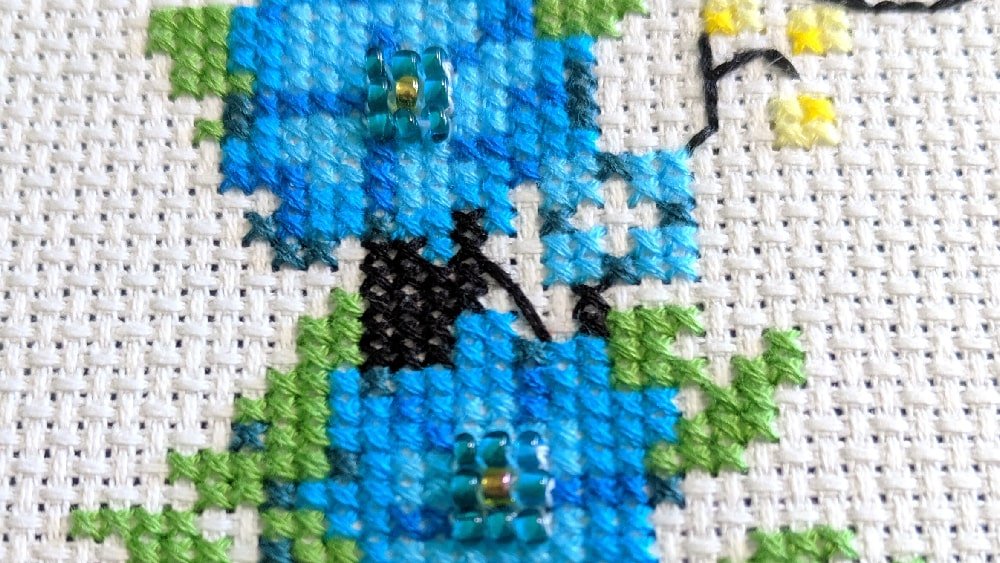
If you are using one or two colors of beads, changing the thread to match the beads works well to hide the thread, but what happens when you have lots of colors?
You don’t want to be constantly changing your thread color. This can be tedious and slow you down.
Instead, use DMC that is a close color to your fabric.
This way the thread will blend in and you won’t have to constantly be switching. Also, it will be easier to bead as you go, regardless of the color of the bead.
Nymo Beading Thread
Nymo is a popular option of thread for cross stitchers beading Mirabilias. This nylon monofilament comes in lots of different colors with the most readily available being white and black.
I recommend getting the white, black, and grey set because the grey matches well with lots of different fabrics.
Size D is most common for bead sizes 8/0, 11/0, and 15/0.
The downside to this thread is that it tends to fray so a thread conditioner, such as Thread Heaven, might be a wise investment.
Keep in mind that Nymo will stretch slightly.
YLI Wonder Invisible Thread
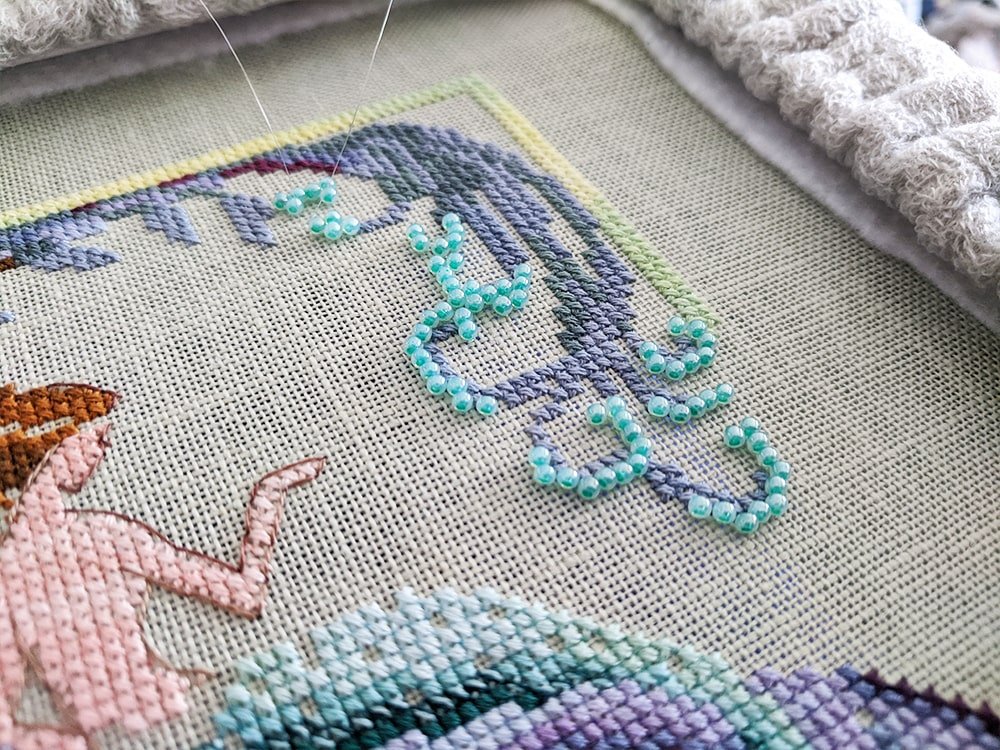
YLI Invisible Thread is my favorite way to attach beads. The thread is so thin and translucent that you can barely see it, which is both good and bad.
It’s a positive attribute that this thread is thin and transparent because you won’t notice it holding your beads. It will almost look like they are attached by magic.
This also presents a problem because it can be difficult to work with. After all, how can you work with a thread that you can’t see?
Needless to say, YLI Invisible Thread did take some getting used to.
Because this thread is slippery it is a good idea to double knot it to the eye of your needle. You can also use a Lark’s Head Knot but I prefer to start beading with the loop method.
Because the thread is so thin, the knots won’t interfere with your beading.
How to Attach Seed Beads
I recommend using two strands to securely attach your beads. Use one long strand and fold it in half to either start with the loop method or a lark’s head knot.
Left Diagonally
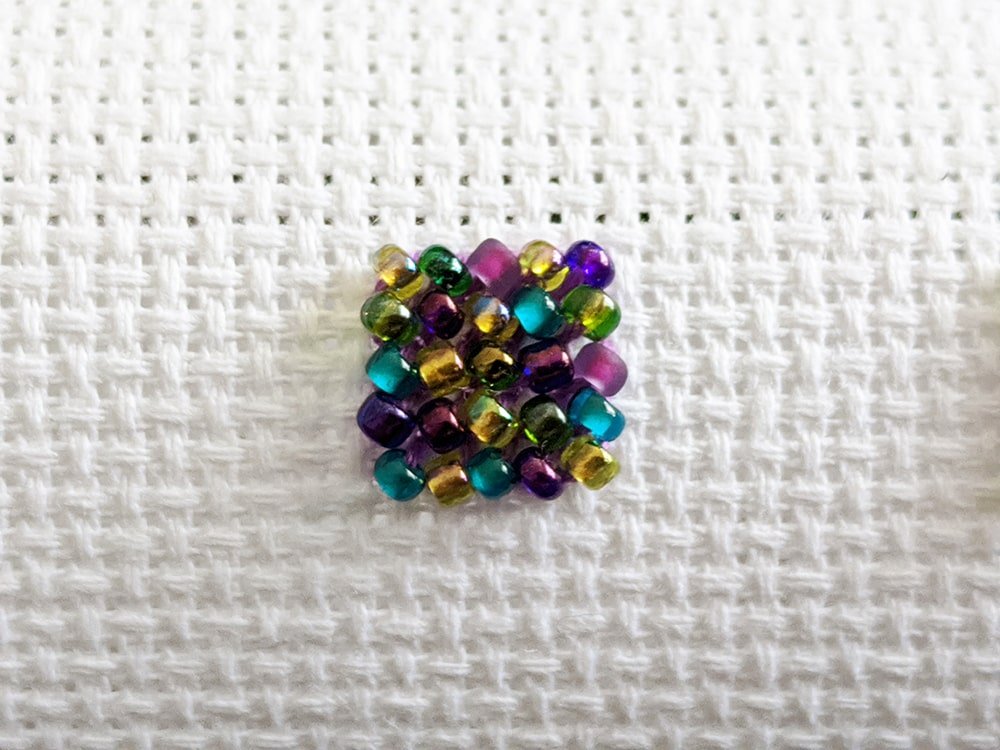
If you start your stitching coming up from the bottom left corner and going down at the top right corner your beads will face left diagonally or backward.
I feel like I see this method most often.
Continue beading with half stitches as you would stitching.
If you want extra security you could do two half stitches through the bead.
The official way to secure the bead is to then complete the cross stitch by drawing up your thread in the bottom right and separating the strands to the sides of the bead and completing the stitch in the top left corner.
This is particularly helpful with 11/0 and bigger beads so that they don’t wobble. Your beads will have a neat, uniform appearance. They aren’t moving anywhere.
Securing the bead this way is my favorite, but if you don’t want to go through the hassle and want to save time, the half stitches work just fine.
Right Diagonally
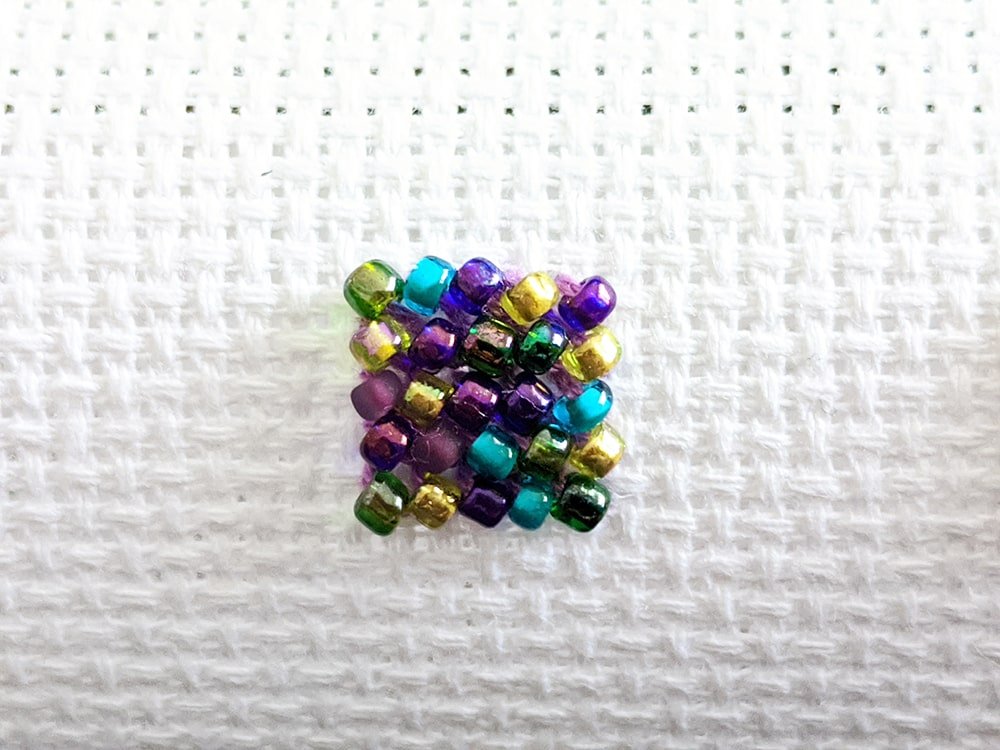
Much like the left diagonal, the right diagonal is done with half stitches. Instead, you will draw your thread up from the bottom right and down through the top left. This will cause your bead to tilt forward or to the right.
Similarly, you can secure your bead by using your thread to straddle the bead.
Horizontally

Instead of using half stitches, you will do a full cross stitch inside the bead so that it lays horizontally.
Vertically

This method is similar to the bead being stitched horizontally, except the bead will lay vertically.
Directionally
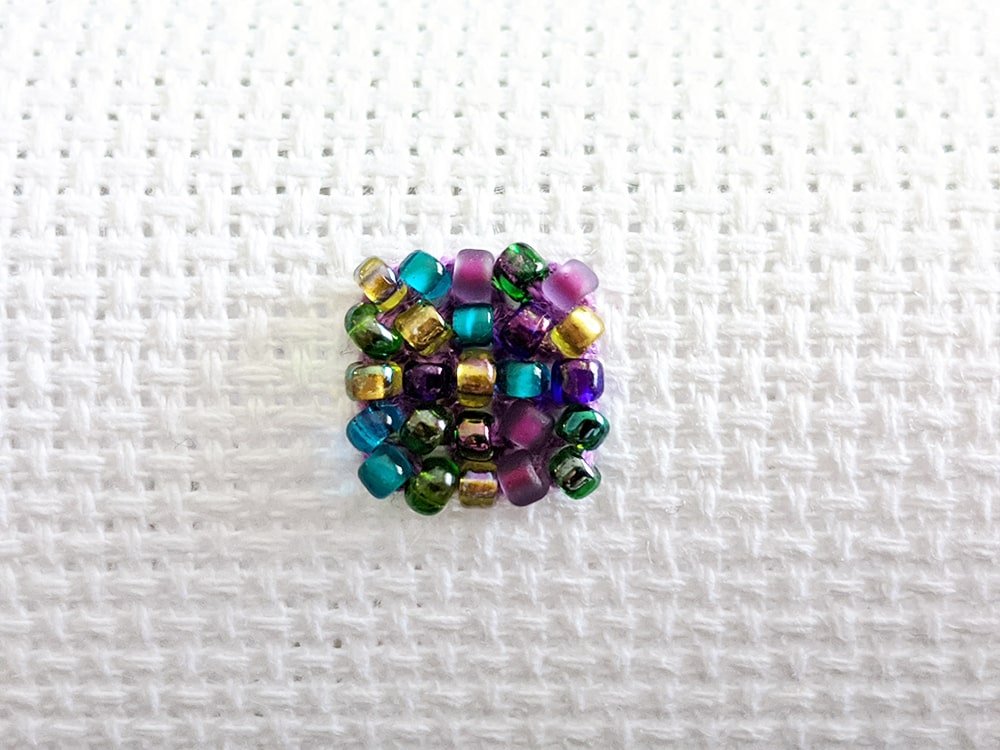
This is an interesting technique I’ve seen. I think that the stitchers who use this method must also do beadwork.
Beading directionally means that you follow the flow of the pattern. This is usually don’t on parts of the pattern that are symmetrical. The bead will face in different directions and can be a combination of all the methods listed before.
How You Prevent Losing Beads?
Dropping beads is going to happen at some point or another no matter how careful you are. It’s a good idea if you are going to do a lot of beading to get an accessory like a Bead Nabber or Tacky Mat.
A Bead Nabber looks similar to a thimble with a tacky tip so that you can easily pick up beads.
The Tacky Mat by Beadalon allows you to set out a portion of your beads without them rolling away from you.
If you do happen to knock over your beads or they get loose from their container, put a stocking over a vacuum nozzle to suck them up.
Tada! So much easier than picking them up by hand and less time-consuming.
Final Thoughts
Do not fear beading. Experiment and discover which tools and techniques you prefer.
Once you do it, you will get tons of practice with one Mira or Nora project, and the process will become no sweat.
I recommend using a size 28 tapestry needle for beads that are 11/0 and bigger. After attaching the bead with a half stitch, secure the bead by separating the strands over the bead.
Good luck beading your first Mirabilia or Nora Corbett.
Happy Stitching!



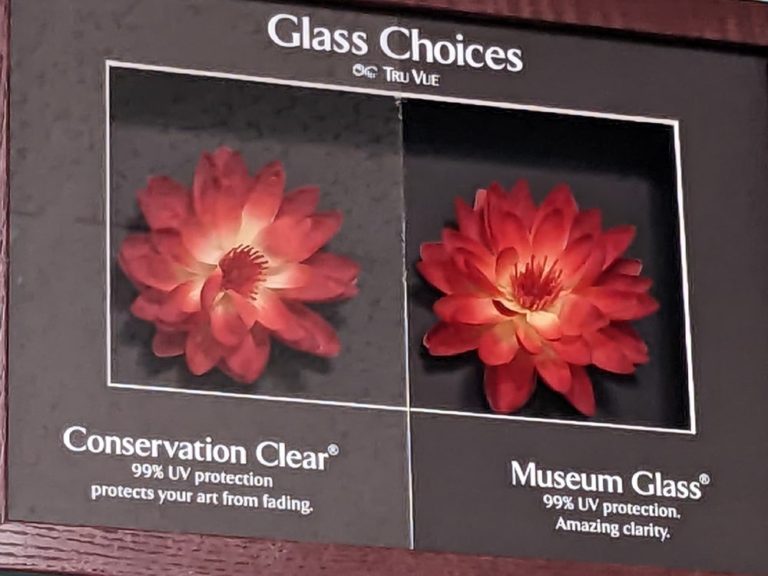
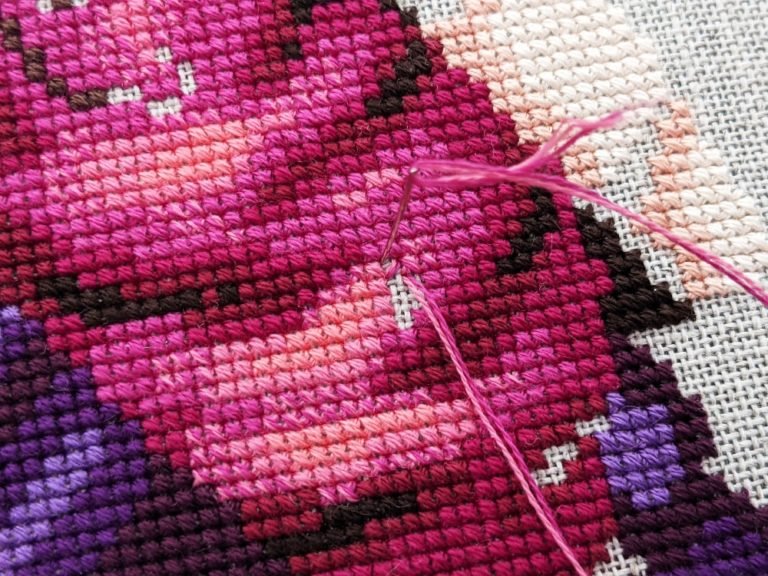
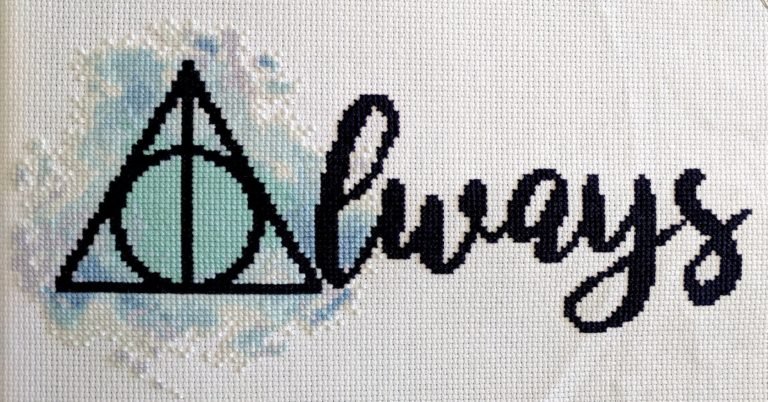
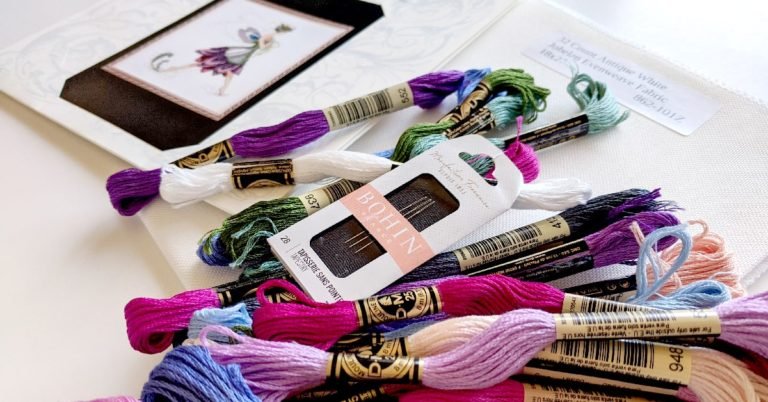
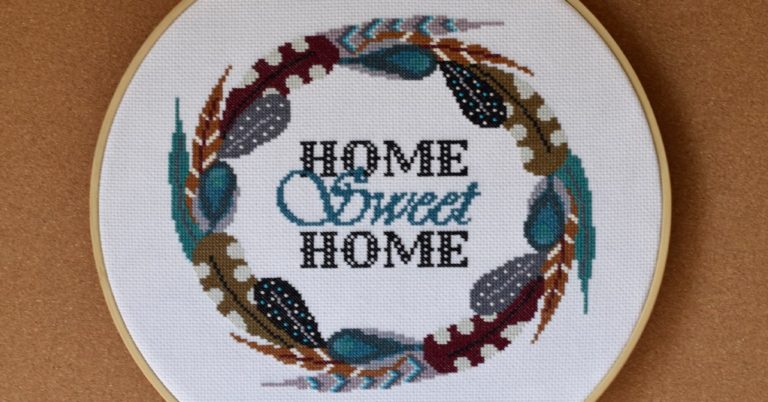
The one thing I’ve noticed when researching cross stitch beading is that no one mentions what size cross stich canvas to use with individual bead sizes. I love Rocailles because they are round. Delicas are more square. So how do you know what size canvas to purchase for your beading project?
This is a great question! Mirabilias and Nora Corbett Designs are stitched on 32 count fabric. I usually use 32 count which equates to 16 count. It’s my favorite count. In addition to other stitchers, I have noticed that in areas where there are a lot of 11/0 seed beads, the beads can lay a little wonky. The 11/0 Glass Seed Beads by Mill Hill are the most common type and called for in the patterns. If you are stitching on 28 count or 14 count those areas have a little more breathing room and the beads won’t be as cluttered. If you prefer to use 36 or 18 count fabric, you will need to change the 11/0 (and anything bigger) to the 15/0 Petite Beads. I hope this helps and I will definitely be adding this information to the post. Let me know if you have any other questions.
Thank you! This is so informative!
I am cross stitching a wedding sampler on linen that has 352 beads in the border. I am concerned about ironing. Any tips?
I’m glad you enjoyed my article 🙂 I don’t iron the front and put a thicker fabric on the back to iron. I have never had a problem ironing by beads. Just be mindful and careful. Good luck!
Do you wash and block your project before or after adding the beads?
I usually wash and block my project before beading because I have had beads bleed before. I know some stitchers do after. It’s personal preference. Just test your supplies before washing for color fastness.
Are the patterns by Nora C one big fold out page or loose pages? Thanks for the informative post.
It depends on the size of the pattern. The Nora Corbett Designs are smaller charts and usually one page, sometimes double-sided. Mirabilia patterns are folded and double-sided. I always scan my patterns and put them together in a photo editor and highlight them as I go.
Hi Stephanie
I am in Australia and have been cross stitching for many years but have never added beads until my current project. Your advice here is excellent. My question is that my beads are applied one at a time and the distance between each is anything from 3/4 inch to 1.5 inches. I assume that I would carry the thread across the back of the work to the next spot for the next bead ?
I carry my thread usually. I use invisible thread so it is not noticeable. One of the advantages of using invisible thread it that you cannot see it through the fabric. Another advantage if you have a cluster of beads in an area you don’t have to switch your thread to match your beads. For longer distances, I would cut the thread and start again in a new area.